12 Ways To Make Leash Walking More Enjoyable For You And Your Dog
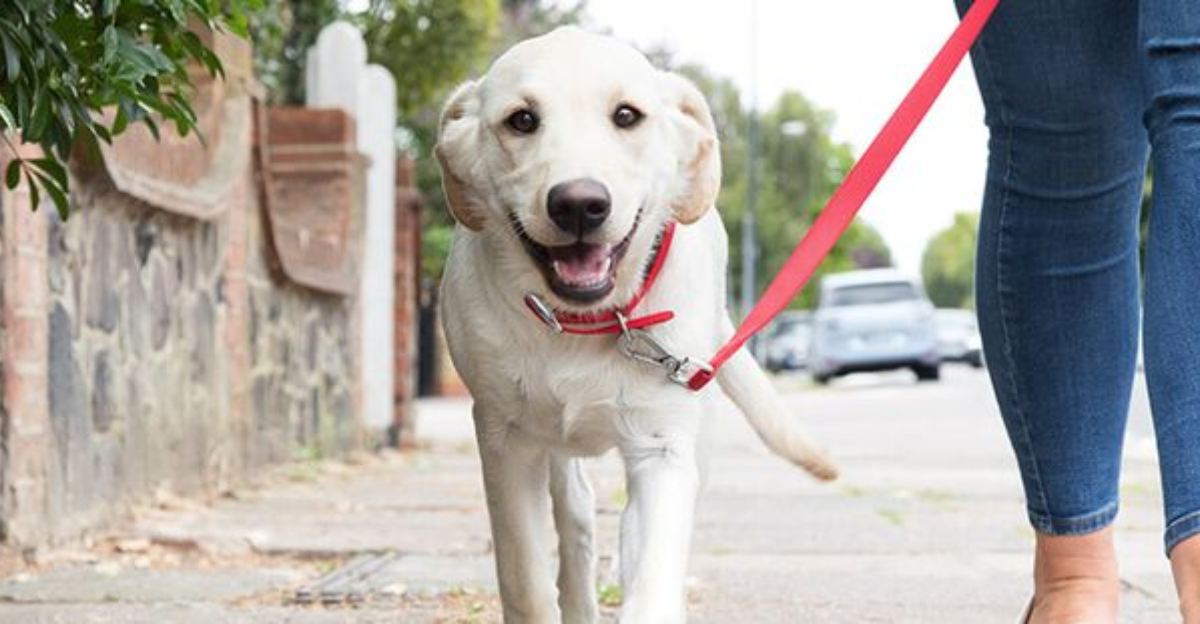
Walking your dog should be a delightful experience for both you and your furry friend. By using the right techniques and equipment, you can transform your walks into enjoyable outings.
Here are tips to enhance your leash walking adventures.
1. Use The Right Equipment
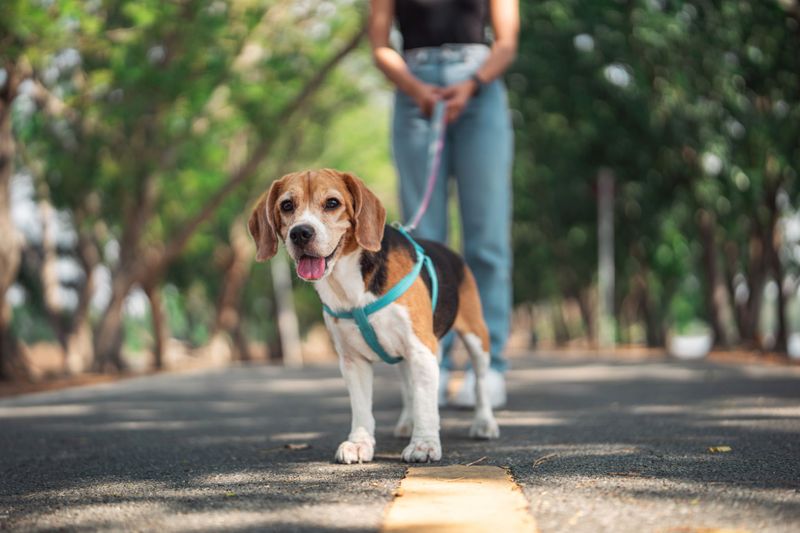
Choosing the best leash and collar can make all the difference. With a variety of leashes and harnesses available, finding the right fit ensures comfort for your dog and control for you.
Avoid retractable leashes if your pup tends to pull. Instead, opt for a sturdy nylon or leather leash. A fitted harness can prevent neck strain and distribute pressure evenly.
Selecting the right gear sets the stage for a pleasant walk, signaling the start of a positive leash walking habit.
2. Use The “Turn And Go” Method
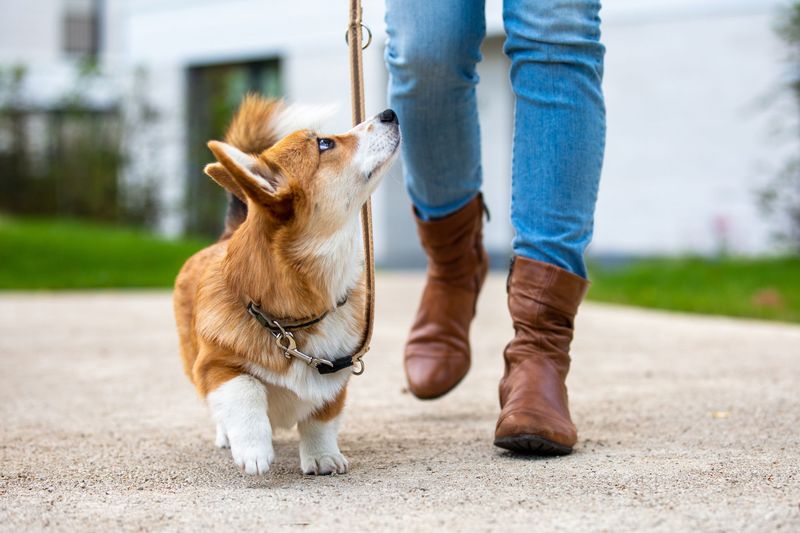
Embrace the art of unpredictability with the turn and go method. If your dog begins to pull, a sudden change in direction captures their attention.
This technique teaches your dog that pulling doesn’t move them forward; rather, it changes the path entirely.
Consistent use of this strategy helps your dog learn to stay by your side. It’s a gentle reminder that teamwork is key, turning what could be a tug-of-war into a graceful dance.
3. Regular Exercise
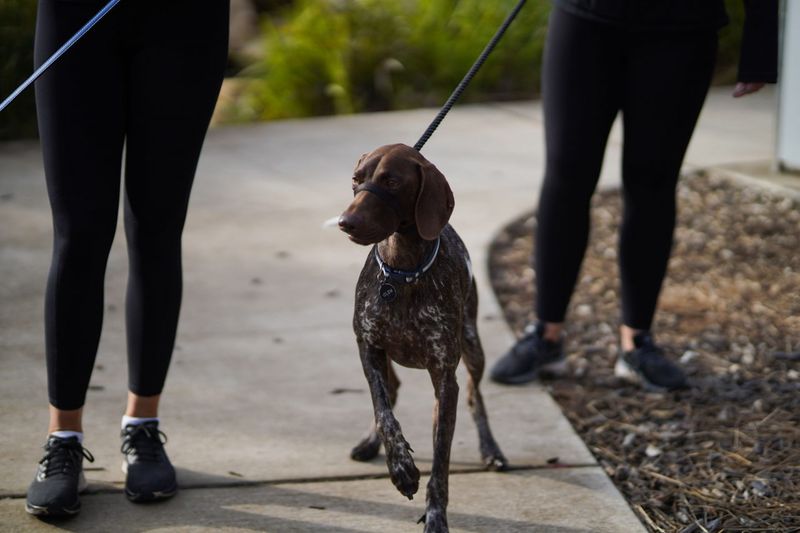
A well-exercised dog is a happy, manageable dog. Ensuring that your pet gets regular exercise reduces the pent-up energy that often causes pulling.
Incorporating activities like fetch or jogging before a walk can make a world of difference. When your dog’s energy is well spent, they’re less likely to pull on the leash.
This pre-walk routine fosters an easier, more enjoyable experience for both of you, transforming a simple walk into a peaceful stroll.
4. Enroll In Obedience Classes
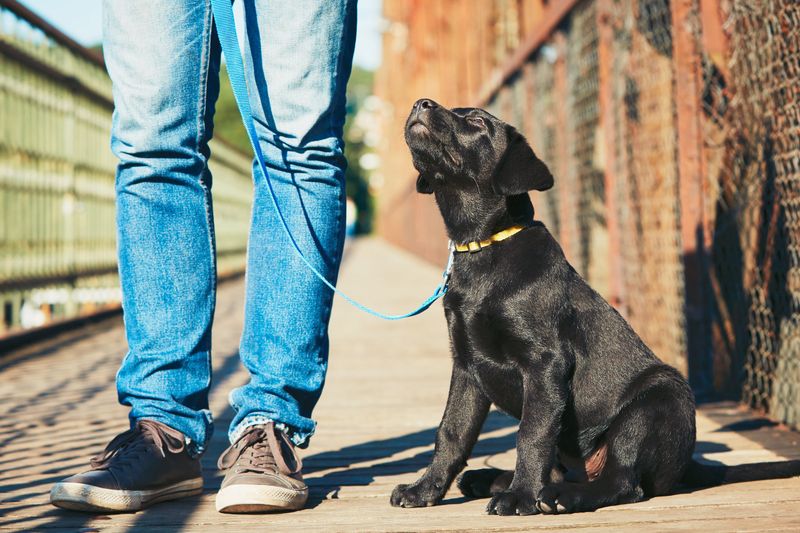
Professional guidance can work wonders for leash manners. Enrolling in obedience classes provides structured training that addresses pulling and other behavioral issues.
With expert advice, you and your dog can learn commands that enhance walking experiences. Obedience classes offer socialization opportunities, which are essential for behavioral development.
The skills acquired here translate to calmer, more controlled walks. It’s a smart investment in a harmonious relationship, creating a bond of understanding and mutual respect.
5. Create A Consistent Walking Routine
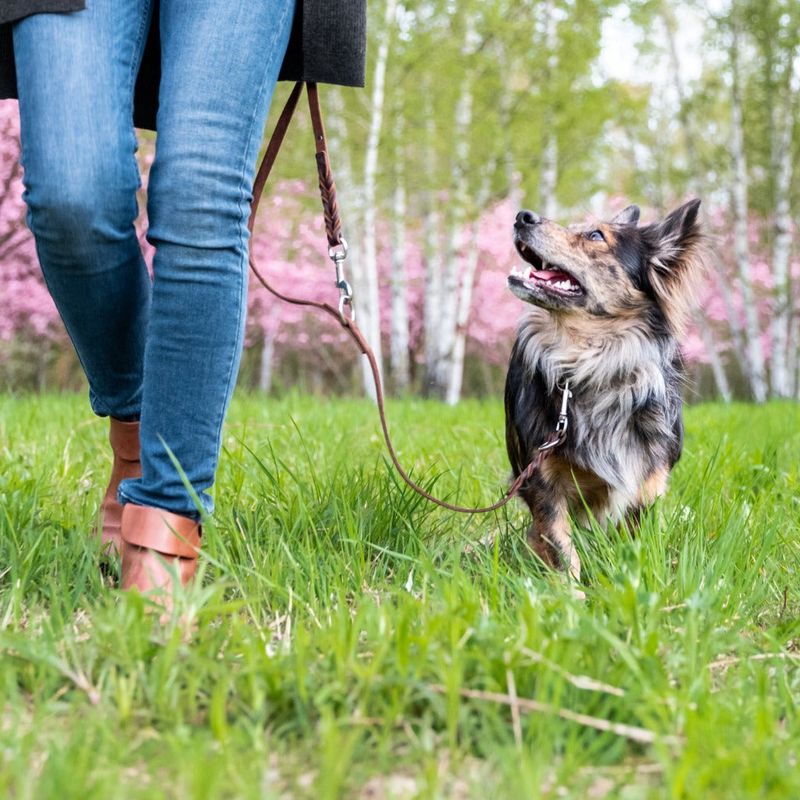
Routine is the backbone of good behavior. Establishing a consistent walking schedule helps your dog anticipate when it’s time to walk, reducing overexcitement.
By setting regular times, your dog learns what to expect, minimizing surprises that can lead to pulling. Consistency brings comfort, bringing predictability to your routine.
It’s like setting a canine clock, building a rhythm that both you and your dog can rely on, leading to peaceful, enjoyable walks.
6. Reward-Based Training
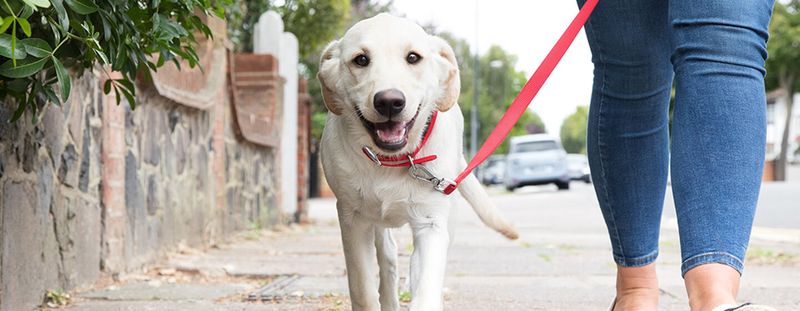
Positive reinforcement is a powerful motivator. Reward-based training uses treats, praise, or toys to reinforce good walking behavior. Every step your dog takes beside you without pulling is a moment to celebrate.
This method fosters an environment of encouragement and cooperation. It’s about turning simple walks into rewarding adventures.
Over time, your dog associates good walking habits with pleasurable outcomes, creating a cycle of positivity and progress that makes walking a joyful experience.
7. Practice Loose Leash Walking
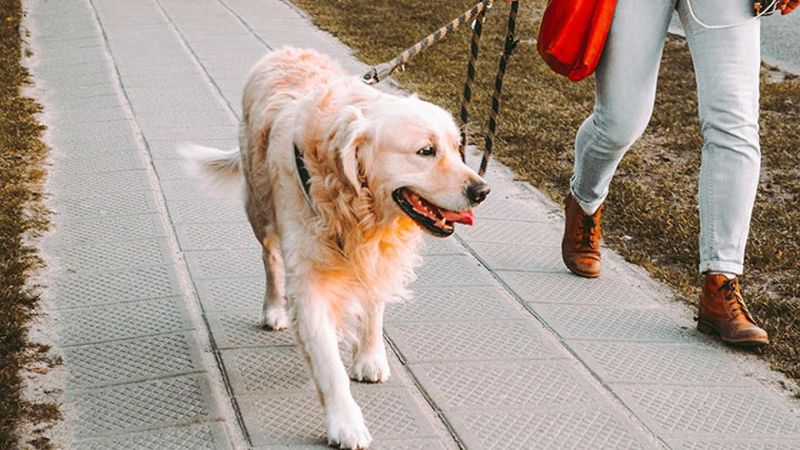
Mastering the art of loose leash walking is a game-changer. By rewarding your dog for staying close without tension on the leash, you teach them the joys of strolling side by side.
This technique promotes calmness and reduces stress, making walks more enjoyable. A relaxed leash is a sign of trust and understanding.
It’s not just a skill but a connection that builds over time, turning walks into harmonious journeys together.
8. Gradual Exposure To Distractions
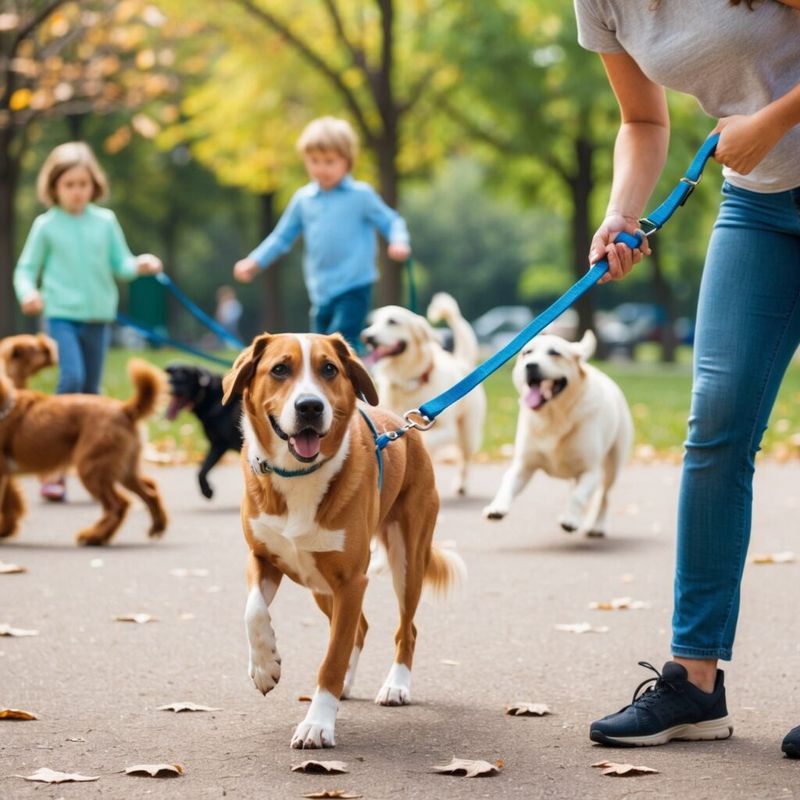
Distractions are everywhere, but they don’t have to derail your walk. Gradual exposure to various stimuli helps your dog stay focused.
Start in quiet areas and slowly introduce more distractions. This method trains your pup to keep their attention on you, regardless of what’s happening around them.
It’s a gradual process, but with patience, your dog will learn to ignore distractions, ensuring that your walks remain peaceful and focused.
9. Stop-And-Go Method
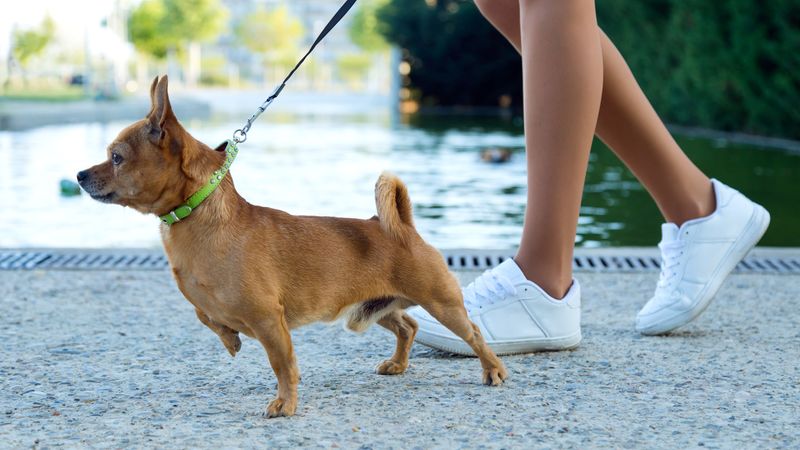
Consistency is key with the stop-and-go method. If your dog starts pulling, stop immediately. Only continue once they return to your side.
This teaches that pulling leads to nowhere. Over time, your dog understands that staying close is the fastest way to continue the adventure.
It’s a simple yet effective technique that turns walks into a cooperative activity rather than a tug-of-war. It’s about moving forward together, step by step.
10. Use Clicker Training
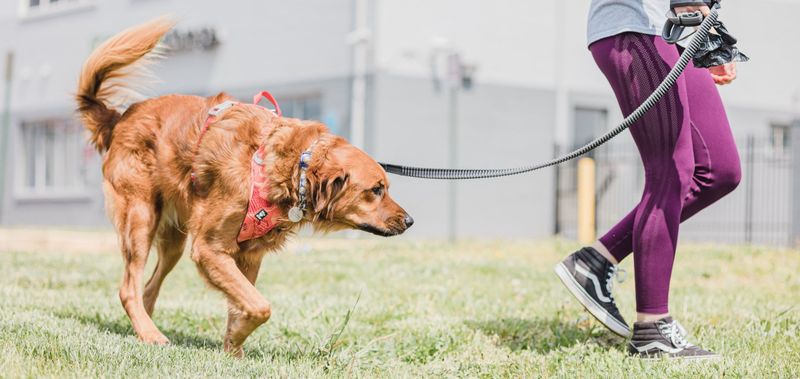
Clicker training is a precise way to mark good behavior. With a simple click, you can communicate exactly what action you’re rewarding.
It’s an effective tool to reinforce walking without pulling. Each click marks success, followed by a treat. This method creates a clear connection between behavior and reward.
Over time, clicker training builds a strong foundation of understanding, making leash walks smoother and more enjoyable for both you and your dog.
11. Teach Commands Like “Heel”
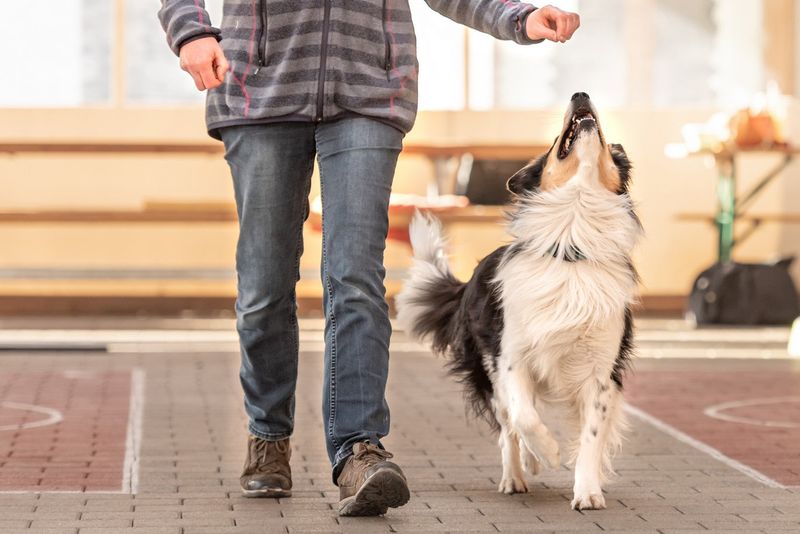
Commands like “heel” provide clear guidance during walks. Teaching these commands gives structure to your outings, transforming them into cooperative adventures.
When your dog understands what’s expected, confusion and pulling diminish. Practicing commands regularly solidifies them in your dog’s mind, creating obedient walking companions.
It’s about creating a language that both you and your dog understand, turning walks into a well-coordinated activity filled with enjoyment and mutual respect.
12. Use A No-Pull Harness
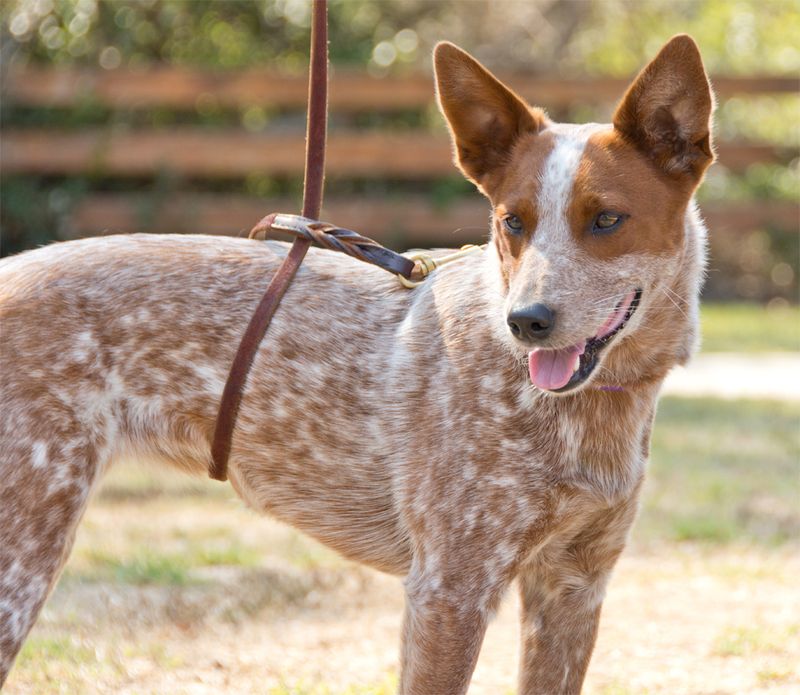
The no-pull harness is a game-changer for many dog owners. Designed to redistribute pressure, it discourages pulling while ensuring comfort.
When used correctly, this harness can transform your walking experience, making it pleasant instead of stressful. It’s like giving your dog a gentle hug, guiding them to walk calmly by your side.
The no-pull harness is not just practical but a step toward harmonious walks, ensuring that both you and your dog enjoy every moment.






